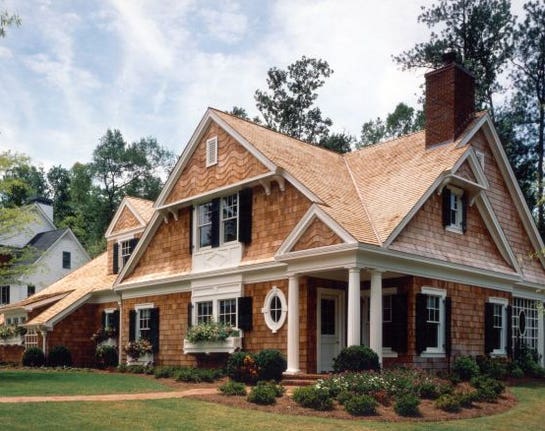
David Brussat
The Pitfalls of Computer Design
Margaret Rhodes, who writes about design issues for Wired, opined last fall in “The Bizarre, Bony-Looking Future of Algorithmic Design” that not only titanium face implants and swing-arms for motorcycles but buildings will soon be grist for computers’ algorithmic mill. What Rhodes calls “generative design" is wonkese for the latest hot alternative to "explicit design,” which has been used for centuries to make buildings and most other things.
Hey, mankind! Get with the program!
But wait. Rhodes quotes how a design-firm dweeb describes the difference:
Jordan Brandt, Autodesk’s resident futurist, makes a clear distinction between explicit design and generative design. Explicit design is when “you have an idea in your head and you draw it,”he says. “Generative design is when you state the goals of your problem and have the computer create design iterations for you.”
With generative design, a designer begins with an objective or set of objectives —the desired energy consumption for a building, for example, or the amount of sunlight a room should receive —and then lets algorithms take the reins on drafting solutions.
Explicit and Generative Design
While there's no denying the potential for speed in algorithmic generative design, Brandt paints a one-dimensional idea of old-fashioned “explicit” design. He leaves out a big piece of the puzzle. A creator does not just think up a product and set it down on a blueprint. When "you have an idea in your head and you draw it," that idea did not just spring like Adam's rib from your brain. Nor is that idea merely the product of the brain recalling (or having researched) precedents for that design.
Long before that, perhaps centuries, others, perhaps thousands of others, gave thought to such a product, wondered how best to make it under the constraints of existing conditions, then actually made that product - say, a house.
Maybe it took more than a split second to conjure, but the result of bending the human mind toward getting the right amount of sunshine into a room might not be something to sniff at. Hundreds or thousands of craftsmen and professionals have been thinking it through using the best practices of their predecessors over long periods of time, each adding their own bit to doing it better and passing it on.
Algorithms and Architecture
Given the subtlety of the human mind, perhaps this is the real generative design process. As for feeding a set of objectives into a computer so that algorithms can reach solutions, Jordan Brandt might want to consider the GIGO factor - garbage in, garbage out. How do his architechnicians know they are feeding in the right parameters into their computers? And how do they know the algorithms have been correctly set up to achieve a reliable solution?
What does asking for "the desired energy consumption for a building" entail? Has the fancy computer program's set of algorithms ever heard of a roof overhang, adding even more cool to the shade of a porch? Does it factor in the angle of the sun? Or the option of closing the shutters, or the design input of having a ceiling height that can handle a particular climate's temperature range? Or does the set of algorithms for energy consumption rely more on an analyst plugging in a bunch of LEED-certified gizmo-green catalogue numbers from his cousin’s daughter-in-law’s sustainable energy supply warehouse?
Just wonderin'.
Architects tinkered for centuries, trial and error, accident or design, with how to leverage climate to create a building capable of satisfying light, heating, cooling and other climate needs spelled out in places all over the world. Today, modern architecture has thrown all of that wisdom out on its ear - and behold the result!
Buildings are stressing our environment to the max with ever-higher costs. Maintenance calls for high-tech "solutions" that are pushing the edge of the inefficiency envelope toward unaffordability and collapse.
For example, millions were spent to engineer a platform from which window washers could clean the kooky accordionic fenestration of Sir Norman Foster's Hearst Tower in New York. And what does it do? It broke 50 stories in the air. Luckily, none of the workers fell to his death.
Would algorithmic computer design have called for a building with straight sides? With the right inputs, no doubt it would. But don’t bet on it!
University of Texas mathematician Nikos Salingaros and fellow architectural theorist Christopher Alexander thought all this through years ago. Some essays by Salingaros on architecture that reflects natural generative processes may be read in the journal Metropolis.
For 30 years, David Brussat was on the editorial board of The Providence Journal, where he wrote unsigned editorials expressing the newspaper’s opinion on a wide range of topics, plus a weekly column of architecture criticism and commentary on cultural, design and economic development issues locally, nationally and globally. For a quarter of a century he was the only newspaper-based architecture critic in America championing new traditional work and denouncing modernist work. In 2009, he began writing a blog, Architecture Here and There. He was laid off when the Journal was sold in 2014, and his writing continues through his blog, which is now independent. In 2014 he also started a consultancy through which he writes and edits material for some of the architecture world’s most celebrated designers and theorists. In 2015, at the request of History Press, he wrote Lost Providence, which was published in 2017.
Brussat belongs to the Providence Preservation Society, the Rhode Island Historical Society, and the Institute of Classical Architecture & Art, where he is on the board of the New England chapter. He received an Arthur Ross Award from the ICAA in 2002, and he was recently named a Fellow of the Royal Society of the Arts. He was born in Chicago, grew up in the District of Columbia, and lives in Providence with his wife, Victoria, son Billy, and cat Gato.









